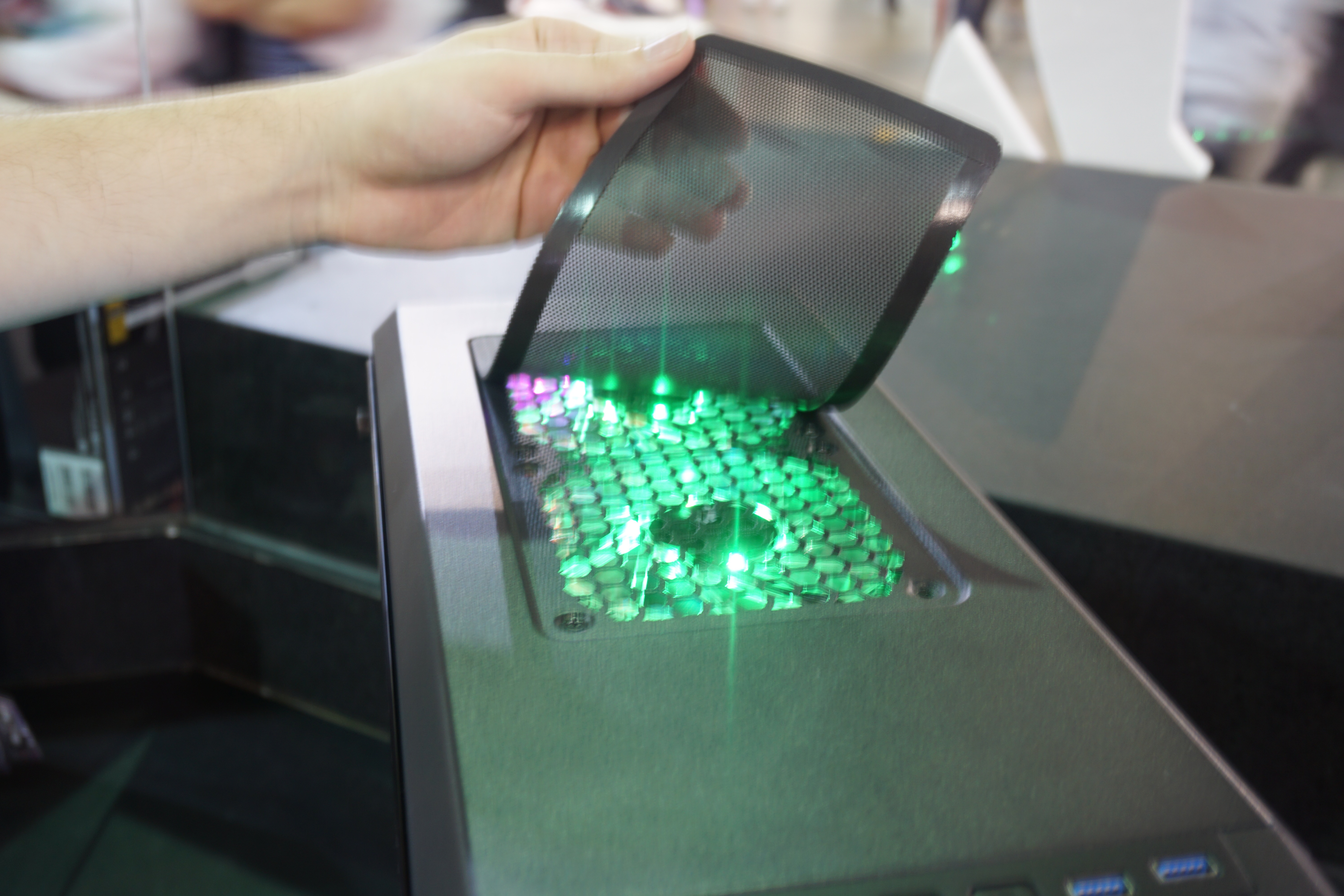Bitfenix's Enso PC Case Blushes in RGB






During Computex, Bitfenix demonstrated its latest case, the Enso, due later this year for the reasonable price of $80, and featuring tempered glass, new RGB lighting options, and some conveniently placed dust filters. It's a solid, affordable case that ticks off all the “keeping up with the Joneses” boxes, save for a USB 3.1 Type-C connector on the front panel, although admittedly we only saw a few of these on cases at Computex.
If you haven’t picked out the underlying themes of the modern-day PC case market, allow us to summarize: Tempered glass and RGB (and more RGB, especially RGB coupled with motherboard-enabled RGB schemes). If you want something clever or exotic, break out your wallet for something like the Corsair carbon fiber case; the robotic In-Win Winbot; the Floating, also from In-Win; or the startacular Quadstellar from Deepcool, all of which will easily stand out, some like sore thumbs.
As for the bling, the discussion always winds around to how many lights, how tastefully done, how creatively placed. Regarding tempered glass, whether that glass is just on a single panel or more, and how well it will show off even more of those lights that now seem to adorn even memory sticks. In for a dime, in for a dollar.
But for your run-of-the-mill PC case, we’re still talking about a rectangular box, differentiated by the age-old features -- you know, like how much stuff it can fit, how easy it is to build within, how quiet it will be, and how reasonably it will keep itself clean. (In-Win, I’m looking at you: if we can have self-cleaning ovens, why not self-cleaning cases?)
The Enso is that normal rectangular box, with tempered glass and RGB.
The sample on display at Computex was a hand-made prototype. The company is still working on a few minor details, but a spokesman said that the case might get a bit longer, mostly to help with cable management. The front panel was not final, and all of that prevented Bitfenix from giving us the dimensions or the weight of the final product. The tempered glass is 4mm thick, and the rest of the case is made of .7mm steel.
This mid-tower case has seven slots, supports a standard ATX motherboard, and can fit a 360mm radiator, along with -- from the looks of it -- seven fans. Unlike some of the smaller cases Bitfenix displayed in its booth, the case is roomy enough to provide more than the necessary clearance for a lengthy graphics card on the front side.
Get Tom's Hardware's best news and in-depth reviews, straight to your inbox.
Perhaps most practically, the case features a series of convenient dust filters, including a magnetic filter on top, and then three sideways removable filters (two on the front panel and one under the PSU). Although the PSU filter was still a bit rickety on the prototype, the front panel filters slid out smooth as can be.
Bitfenix hopes the real star of the show is the RGB lighting, which you can see in the video. This was a refrain we heard throughout Nangang Hall (where all of the PC case vendors were housed), and moreover, most of them had set out to solve a particularly thorny problem where RGB controls are concerned; namely that each motherboard vendor had its own addressable RGB synchronization scheme (not to mention the RGB schemes like Razer Chroma): MSI with its Mystic Light Sync, Asus with Aura Sync, Gigabyte’s RGB Fusion, and ASRock’s Aura RGB, not to be confused with the Asus Aura Sync of course. Most case manufacturers we talked to have taken to a.) providing their own RGB controls, b.) attempting to work with various motherboard schemes to sync with those, and c.) wishing everyone could get behind one global standard for doing so.
At any rate, Bitfenix includes its own controller, with a hub into which other peripherals and coolers can connect and work with its RGB scheme; and for now, the company has chosen to work with Asus, and the case on display plugged into the Crosshair VI Extreme motherboard.
